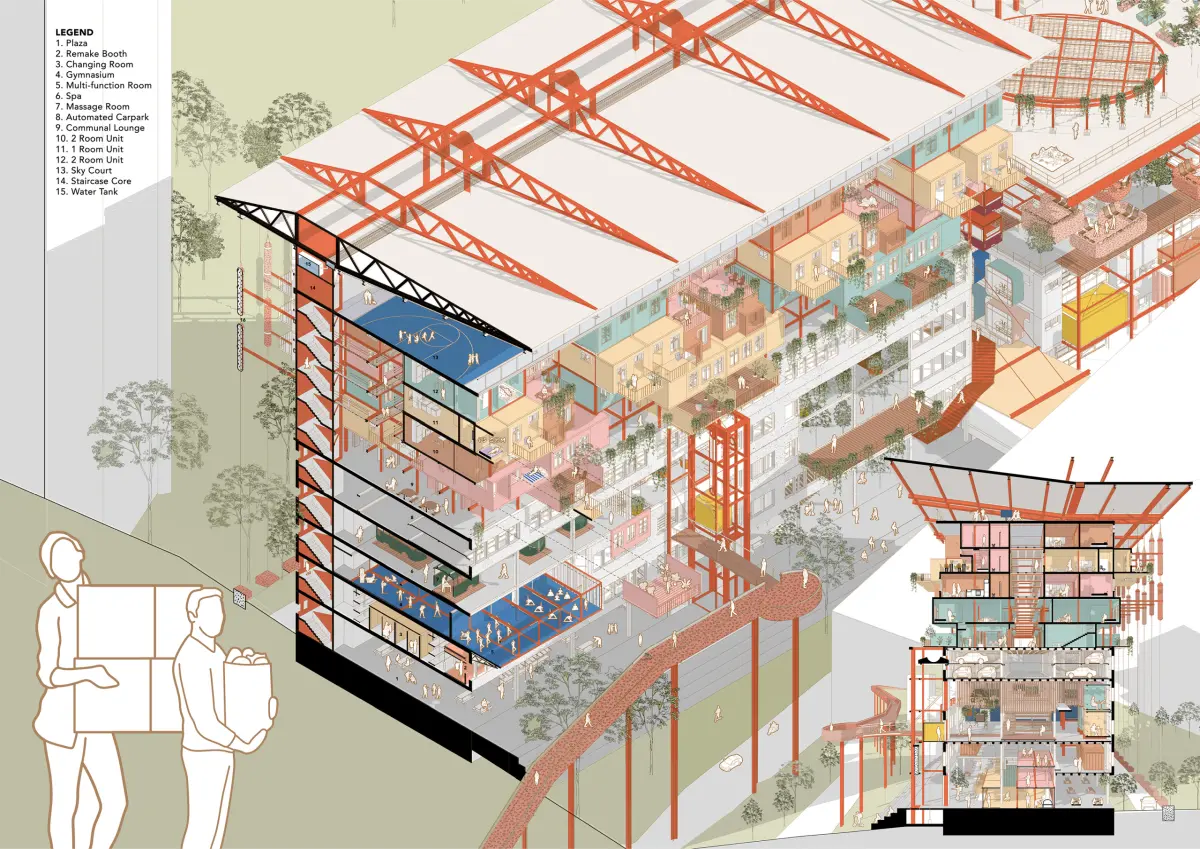
Living On Reuse
BY Fasihah Bte Mohmad Azhar
SUPERVISED BY Assoc. Prof. Cheah Kok Ming
STUDIO THEME ANTIFRAGILE FRAMING
Abstract
Living on Reuse, looks at a new way to deal with rezoned sites in order to reduce building waste and to meet the new proposed Plot Ratio. Using architecture and construction methodologies as a medium between the pre-existing linear economic strategies, Living on Reuse sees existing buildings and its waste as a resource. Hence, rebranding waste as a part of a zero waste agenda for the users through architectural facilitation and program.
Being situated in an industrial zone, Hillview Repurposed the existing building stock, (Hillview Warehouse) to convert it into a private residential area, due to rezoning of the site. The project taps on the potentials of existing building that has high industrial strength and also salvages demolished building waste as a part of the zero waste initiative.
The zero waste initiative can be extended to its program by promoting Reuse, Repurpose and Remade values. As the site resides between two hills, a bridge traverses through the building which provides opportunities for the community to be a part of the zero waste agenda. Remake workshops are made available to the public for upskilling. The workshops are co-managed by social enterprise and people in need to transform waste into high utility valued goods.
Hence, the new development could demonstrate a new form of living that is centred around the idea of zero waste and community and a new way of approaching rezoned sites.
Supervisor Comments
A robust exploration of adaptive reuse of a building in a land rezoned from industrial use to residential purpose. The thesis demonstrates strong tectonic expression ensuing from well-considered cradle to cradle strategies and technical imagination. Another insightful takeaway is its agenda to also promote circular economy and perpetuate low carbon lifestyle amongst the tenants and residents through facilities for social enterprises, sharing culture and closed-loop services. The proposition also investigates the affordance of public commons achieved by an aerial connector linking two nature parks passing through the private development. The thesis situates architecture for conveying sustainability lessons.
- Assoc. Prof. Cheah Kok Ming